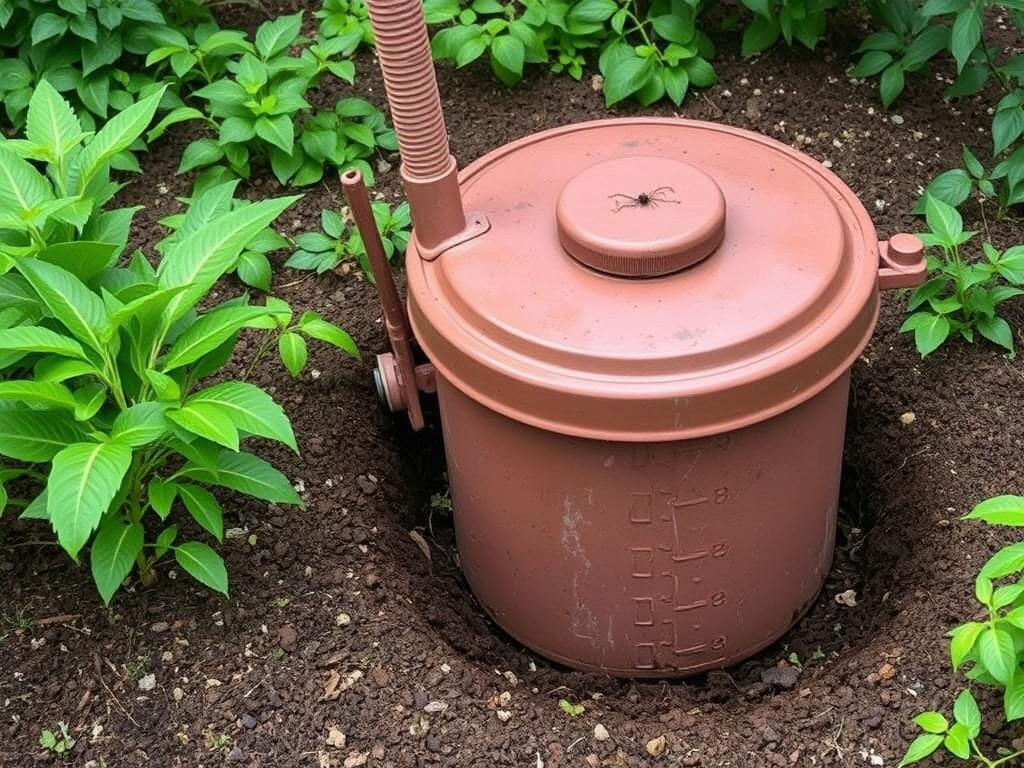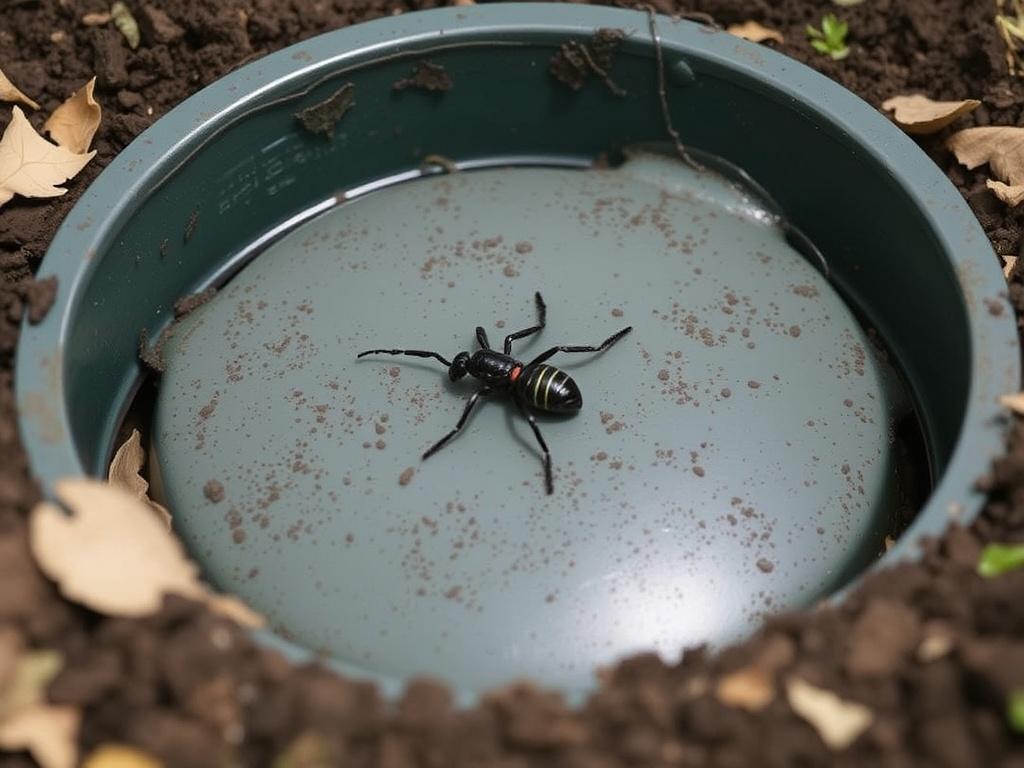- Understanding the Problem: What Are Septic Tank Insects?
- Common Types of Septic Tank Insects
- How These Insects Affect Your Septic System
- Identifying Signs of a Septic Tank Insect Infestation
- Why Do Septic Tank Insects Appear? Exploring the Causes
- How to Prevent Septic Tank Insects: Essential Maintenance Tips
- Effective Ways to Get Rid of Septic Tank Insects
- Biological Treatments
- Chemical Solutions
- DIY Methods
- How to Safely Inspect Your Septic Tank for Insects
- The Role of Professional Septic Services
- Common Myths and Misconceptions About Septic Tank Insects
- Summary Table: Quick Tips to Deal with Septic Tank Insects
- Conclusion
Understanding the Problem: What Are Septic Tank Insects?
If you’ve ever noticed tiny flying bugs around your septic tank area or in your bathroom near the drains, chances are you’re dealing with septic tank insects. These pests can be unsettling, and many homeowners worry about what these bugs mean for the health of their septic system, as well as their home’s hygiene. Septic tank insects refer to various small insects that thrive near or inside septic tanks, including drain flies, moth flies, and sometimes even mosquitoes that find the moist, organic-rich environment of a septic tank ideal for breeding. While some of these insects are relatively harmless outside of being a nuisance, others can pose risks to health if left unmanaged.
Many people ask, “Why do septic tank insects appear in the first place?” It primarily comes down to the damp conditions and abundant organic matter that septic tanks provide. Also, when the septic system is not properly maintained, stagnation can occur, creating perfect breeding grounds for these bugs. Knowing this helps homeowners take early measures to control and eventually eliminate these pests.
Common Types of Septic Tank Insects
It’s useful to familiarize yourself with the key players so you can identify what you’re dealing with and understand their behavior. Here are the most common septic tank insects encountered by homeowners:
- Drain Flies (Moth Flies): These tiny, moth-like flies can often be found near drains and septic tank lids. They have fuzzy bodies and wings and typically emerge in large numbers.
- Fungus Gnats: Though more common indoors, fungus gnats can sometimes be found near septic systems where moisture encourages fungal growth.
- Psychodid Flies: Similar to drain flies but more closely associated with sewage and septic tanks; they are small, hairy, and typically rest on vertical surfaces.
- Mosquitoes: Some mosquito species lay eggs near septic tank vents or openings, although this is less common if your tank is well sealed.
How These Insects Affect Your Septic System
At first glance, these insects may seem like just an annoyance, but their presence could suggest underlying issues with the septic tank system. For example, a sudden surge in drain flies or similar insects may indicate organic build-up, poor drainage, or cracks in the septic tank allowing insects to access the wastewater inside. These insects do not typically cause structural damage to your septic system, but they can indicate issues that could escalate if ignored.
Identifying Signs of a Septic Tank Insect Infestation
Before jumping into treatment methods, it’s important to recognize the signs that indicate septic tank insects might be present. Some symptoms are quite obvious, while others require careful observation:
- Increased insect activity around drains and septic tank lids: Seeing swarms or clusters of small flies in these areas is a key sign.
- Musty or “sewer-like” odors: Persistent unpleasant smells can draw insects and indicate septic system ventilation problems or leaks.
- Slow draining fixtures: When drains back up or water drains slowly, organic matter accumulates, inviting insect breeding.
- Visible flies in the bathroom or basement: These insects often migrate indoors from their breeding sites outside.
If you detect these signs, it’s best to act quickly to avoid a bigger infestation.
Why Do Septic Tank Insects Appear? Exploring the Causes
The emergence of septic tank insects is rarely random. Several factors contribute to their proliferation:
- Poor system maintenance: Neglecting to pump septic tanks regularly leads to sludge and scum accumulation, creating breeding grounds for insects.
- Leaky or damaged tank lids: Cracks or gaps in the septic system openings allow insects easy access.
- Excess moisture and organic material: Septic tanks and their associated drains have plenty of moisture and organic waste, ideal for insect larvae to develop.
- Clogged or slow drains: Inadequate water flow allows organic films to build up inside pipes, attracting insects.
- Improper venting: Poorly ventilated septic systems encourage stagnant conditions that insects thrive in.
Understanding these causes helps you troubleshoot and implement effective solutions.
How to Prevent Septic Tank Insects: Essential Maintenance Tips
Prevention is key. Once these insects establish a breeding site, eliminating them becomes tricky. Fortunately, simple regular practices can reduce the risk considerably:
- Schedule Regular Septic Tank Pumping: Pumping sludge and scum at recommended intervals keeps the tank functioning well and removes breeding substrates.
- Check and Seal Septic Tank Lids: Ensure all openings are properly sealed to prevent insect entry.
- Fix Leaks and Drain Blockages Promptly: Addressing plumbing issues reduces stagnant water and organic buildup where insects live.
- Maintain Proper Ventilation: Clean and inspect vent pipes that allow gases to escape and keep the system aerated.
- Use Water Efficiently: Excess water waste increases strain on the septic system and promotes insect-friendly conditions.
- Install Mesh Screens: Placing fine mesh over vents or drain openings can block insect entry without disrupting airflow.
Effective Ways to Get Rid of Septic Tank Insects

If prevention wasn’t enough and you’re dealing with septic tank insects now, don’t worry. Several practical steps can help you reclaim your space. Here’s a comprehensive approach:
Biological Treatments
Some homeowners prefer natural biological treatments that enhance microbial activity to break down organic matter faster, reducing breeding grounds. Products containing beneficial bacteria and enzymes can be poured into drains and septic tanks to improve decomposition and discourage insects.
Chemical Solutions
There are insecticides specifically formulated for drain flies and related pests. However, use these cautiously, as harsh chemicals can harm the beneficial bacteria inside your septic tank, potentially disrupting its operation. Opt for septic-safe insecticides and always follow manufacturer instructions.
DIY Methods
Several home remedies may help manage small infestations:
- Apple Cider Vinegar Trap: Fill a bowl with apple cider vinegar and a drop of dish soap; the soap breaks the surface tension and traps flying insects.
- Sticky Traps: Hang sticky fly papers near septic lids or bathroom drains.
- Boiling Water: Pour boiling water down drains to kill larvae and reduce organic buildup.
Though these approaches often require patience and repetition, they can significantly reduce insect populations.
How to Safely Inspect Your Septic Tank for Insects

When inspecting your septic system for insects, consider safety first. Septic tanks contain toxic gases, and lids can be heavy. Always:
- Wear gloves and protective eyewear.
- Work in well-ventilated areas.
- Use a flashlight to inspect cracks or gaps where insects may enter.
- Do not open the tank lid unless you are trained or with a professional.
For thorough inspections, it’s best to hire septic system experts who can safely evaluate and suggest needed repairs or maintenance.
The Role of Professional Septic Services
While DIY steps are useful, professional septic services are often necessary to handle severe insect infestations, especially if they reflect underlying septic issues such as damage or sludge buildup. Professionals provide:
- Comprehensive septic tank pumping and cleaning.
- Tank and pipe repairs to seal entry points and fix leaks.
- Advanced treatment options to restore system balance.
- Inspections using specialized equipment to detect hidden problems.
Regular professional maintenance is the best long-term defense against septic tank insects and system failure.
Common Myths and Misconceptions About Septic Tank Insects
Before wrapping up, let’s clear up some common myths that cause confusion among homeowners:
| Myth | Reality |
|---|---|
| Septic tank insects only appear in poorly maintained systems. | While poor maintenance increases risk, even well-maintained systems can attract insects temporarily. |
| Spraying insecticides everywhere solves the problem immediately. | Insecticides alone rarely solve the root causes and can harm the septic system bacteria. |
| Septic tank insects are always dangerous to human health. | Most are harmless, though annoying; only some carry diseases, and risk grows with large infestations. |
| Sealing the tank lid stops all insects completely. | Sealing is important but doesn’t guarantee total insect proofing; other entry points and conditions must be managed. |
Understanding these myths helps you approach the problem with clear expectations.
Summary Table: Quick Tips to Deal with Septic Tank Insects
| Action | Purpose | Frequency |
|---|---|---|
| Regular septic tank pumping | Remove sludge and provide healthy system function | Every 3-5 years (or as recommended) |
| Inspect and seal tank lids | Prevent insect entry | Annually or after severe weather |
| Use biological cleaners | Enhance organic matter breakdown, kill larvae | Monthly |
| Fix leaks and clogs promptly | Reduce standing water and breeding sites | As needed |
| Install mesh screens | Block insects from vent and drain openings | Once |
| Consult professional septic services | Ensure system health and deal with infestations | Every 2-3 years or when issues arise |
Conclusion

Dealing with septic tank insects can feel challenging, but with the right knowledge and approach, it’s absolutely manageable. These tiny pests often signal the need for better septic system maintenance or repair—addressing these underlying factors goes a long way in solving infestations. Regular septic tank pumping, sealing lids, repairing leaks, and maintaining good hygiene practices form the foundation of prevention. For existing insect problems, a combination of natural, chemical, and professional treatments usually brings relief. Remember, your septic system is vital for your home’s sanitation, so treating it well also means keeping pests at bay. By staying vigilant and proactive, you can enjoy a cleaner, safer, and insect-free septic system for years to come.
Помогла вам статья?






